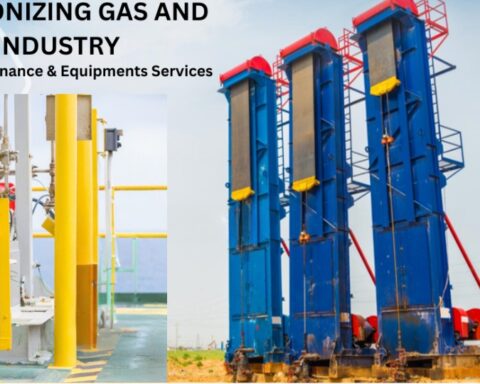In the modern era, managing human resources efficiently is crucial for the success of any organization. With the advent of technology, traditional HR processes have evolved into sophisticated systems powered by HR software. This comprehensive guide explores the significance of HR software, its functionalities, benefits, and the impact it has on streamlining HR operations.
Understanding HR Software
- Definition of HR Software
HR software, also known as Human Resource Management Systems (HRMS) or Human Capital Management (HCM) software, refers to a suite of tools designed to automate, streamline, and optimize various HR tasks and processes. These can include but are not limited to recruitment, onboarding, performance management, payroll, benefits administration, and employee training. - Evolution of HR Software
The evolution of HR software can be traced back to the 1980s when businesses began to digitize HR processes with basic software solutions. Over the decades, advancements in technology have led to the development of sophisticated HR software platforms that integrate cloud computing, artificial intelligence (AI), and data analytics capabilities.
Key Features of HR Software
- Recruitment and Applicant Tracking
HR software enables organizations to streamline the recruitment process by providing features such as job posting, candidate sourcing, applicant tracking, resume parsing, and interview scheduling. These tools help HR professionals identify and attract top talent more efficiently. - Onboarding and Offboarding
Effective onboarding is essential for new employees to integrate smoothly into the organization. HR software facilitates the onboarding process by automating paperwork, providing access to company resources, and guiding new hires through orientation programs. Similarly, offboarding functionalities ensure a seamless exit process for departing employees. - Employee Management and Self-Service
HR software empowers employees with self-service capabilities, allowing them to update personal information, access company policies, request time off, and view their pay stubs. This reduces the administrative burden on HR staff and enhances employee satisfaction by providing autonomy and transparency. - Performance Management
Performance management modules within HR software facilitate goal setting, performance reviews, feedback collection, and competency assessments. These tools enable organizations to track employee performance, identify areas for improvement, and recognize high performers. - Payroll and Benefits Administration
HR software automates payroll processing, tax calculations, and benefits administration, ensuring accuracy and compliance with regulatory requirements. Additionally, these platforms often integrate with third-party vendors to manage employee benefits such as health insurance, retirement plans, and flexible spending accounts. - Learning and Development
Learning management systems (LMS) embedded within HR software allow organizations to deliver and track employee training programs, certifications, and professional development initiatives. By investing in employee learning and skill development, organizations can foster talent retention and enhance workforce productivity.
Benefits of HR Software
- Improved Efficiency and Productivity
By automating repetitive tasks and streamlining workflows, HR software frees up time for HR professionals to focus on strategic initiatives such as talent acquisition, employee engagement, and organizational development. This increased efficiency leads to higher productivity across the organization. - Enhanced Data Accuracy and Compliance
HR software reduces the risk of errors associated with manual data entry and ensures compliance with labor laws, regulations, and industry standards. By maintaining accurate employee records and generating compliant reports, organizations mitigate legal and financial risks. - Greater Visibility and Insights
With robust reporting and analytics capabilities, HR software provides stakeholders with real-time visibility into key HR metrics such as employee turnover, workforce demographics, performance trends, and training effectiveness. These insights enable data-driven decision-making and strategic planning. - Improved Employee Experience
HR software enhances the employee experience by providing self-service tools, personalized communication, and access to resources that empower employees to manage their work-related tasks more efficiently. A positive employee experience contributes to higher engagement, satisfaction, and retention rates. - Cost Savings
While the initial investment in HR software may seem significant, the long-term cost savings associated with reduced administrative overhead, improved operational efficiency, and minimized compliance risks justify the expense. Additionally, HR software eliminates the need for paper-based processes, saving on printing, storage, and postage costs.
Considerations for Implementing HR Software
- Needs Assessment and Vendor Selection
Before implementing HR software, organizations should conduct a comprehensive needs assessment to identify their specific requirements and objectives. Evaluating multiple vendors and demoing their software solutions can help organizations select the platform that best aligns with their needs and budget. - Integration and Scalability
It’s essential to choose an HR software solution that integrates seamlessly with existing systems such as payroll, time tracking, and accounting software. Additionally, the chosen platform should be scalable to accommodate future growth and evolving business needs. - User Training and Support
Proper training and ongoing support are critical for successful adoption of HR software. Organizations should invest in training programs to familiarize HR staff and employees with the software’s functionalities and provide access to technical support resources for troubleshooting and assistance. - Data Security and Compliance
Data security should be a top priority when selecting HR software. Organizations should choose vendors that prioritize data protection measures such as encryption, access controls, and regular security audits. Furthermore, the software should comply with relevant data privacy regulations such as GDPR and CCPA.
Conclusion
HR software has revolutionized the way organizations manage their human capital, offering a wide range of functionalities to streamline HR processes, improve efficiency, and enhance the employee experience. By investing in the right HR software solution and implementing it effectively, organizations can gain a competitive advantage in attracting, developing, and retaining top talent.





